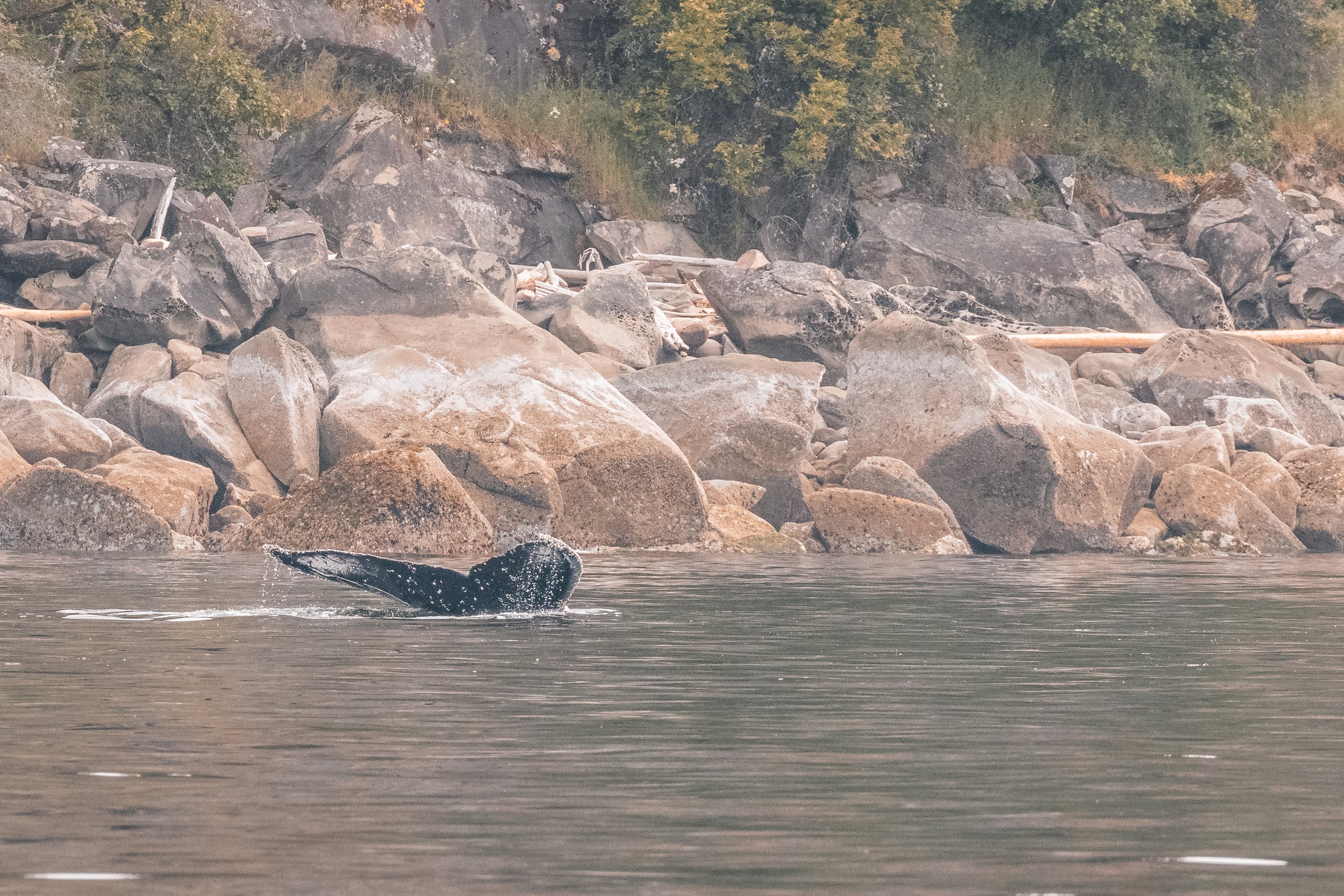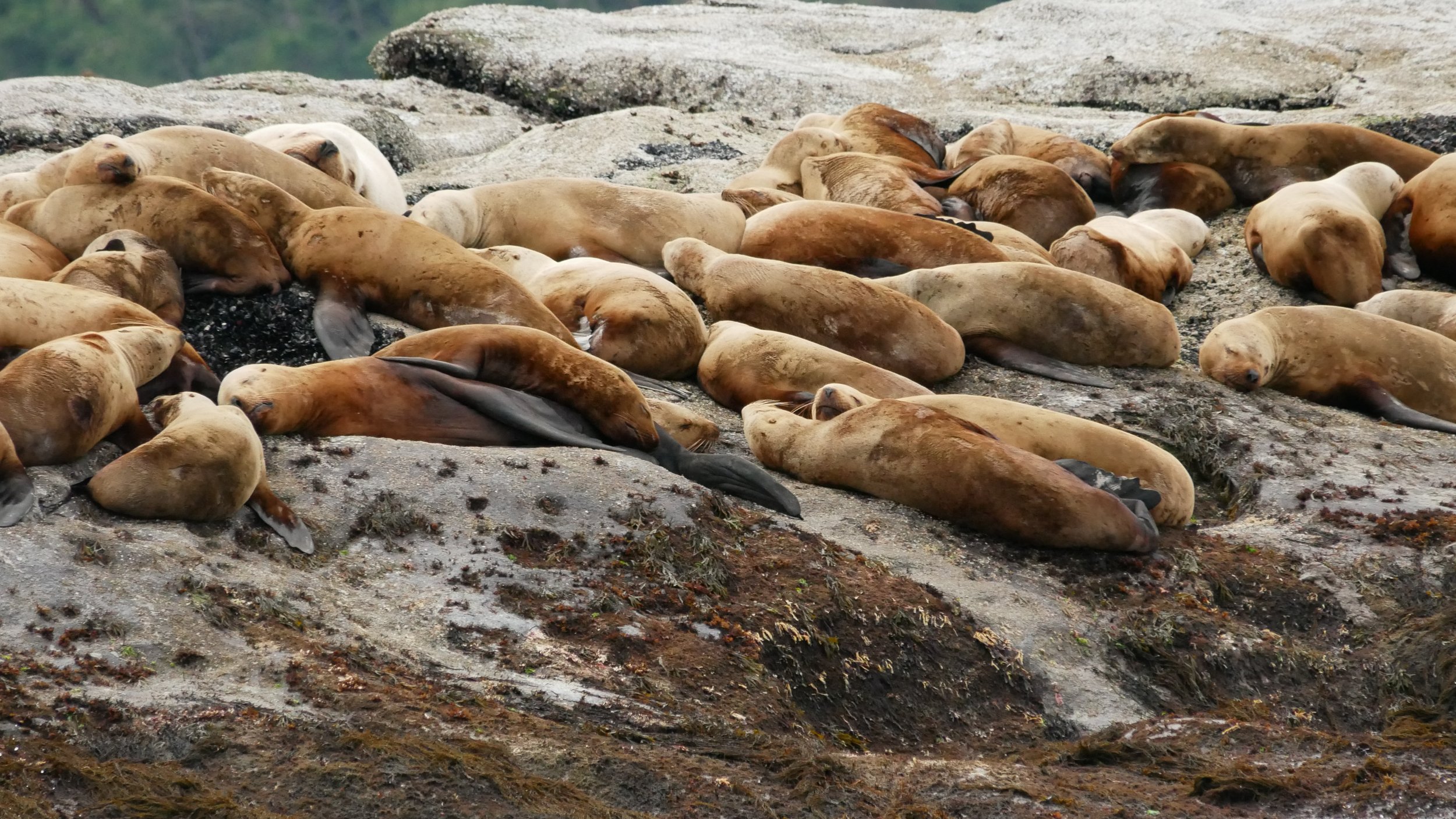June 1, 2022 - Neowise the Humpback near Ruxton Passage
Today we got to enjoy calm seas in the Gulf island while we watched young Neowise, a humpback born in 2020, travelling and feeding as he made his way through Ruxton pass.
This little whale wasn’t super active today, but that’s to be expected. Humpbacks spend their summers here, feeding on small fish and krill before they head back south for the winters. We aren’t sure where Neowise, or his mother Heather, travel in the winter, but it’s likely they head to Hawaii or Mexico, where most of our humpbacks go.
When humpbacks are here for the summer, they can eat up to 3000 lbs of food every day! While that may seem like a lot of food, it’s important for them to gain as much weight as possible before they leave, because once they do they stop eating until they return the following spring. That can mean a 4-6 month crash diet! When humpbacks return they are running on fumes and need to start eating to begin gaining weight again.
When Neowise was here in 2020 he was still feeding on his mom’s fat-rich milk, which helped him gain weight and grow rapidly. After they returned to the breeding grounds Neowise was on his own. He learned everything he needed to survive from his mom in one short year. Humpback calves typically return to the same feeding grounds their mom showed them, so hopefully, we will get to see Neowise for many years to come and continue to watch him grow as he feeds in our nutrient-rich waters.
Today’s photos are by Marine Naturalists Cheyenne Brewster, Janine Van Der Linden, and Vanessa Vereschahen.
Tree Island. Photo by Cheyenne Brewster.
Tip of Pylades Island. Photo by Cheyenne Brewster.
Photo by Cheyenne Brewster.
Photo by Janine Van Der Linden.
Photo by Janine Van Der Linden.
Photo by Janine Van Der Linden.
Photo by Janine Van Der Linden.
Photo by Janine Van Der Linden.
Photo by Janine Van Der Linden.
Photo by Janine Van Der Linden.
Photo by Janine Van Der Linden.
As usual, we stop to take a look at seals and sea lions when possible. These fuzzy pinnipeds can be just as exciting as the whales, often calling to one another, barking and even fighting, especially as we approach the breeding season.
Our sea lions won’t be with us much longer, with the breeding season beginning shortly. The Steller sea lions will begin travelling north to their breeding grounds, while our California sea lions will head south. We will see them return in the fall, but we’re hopeful that we will have a few stragglers that stick around through the summer to entertain us.
Photo by Janine Van Der Linden.
Photo by Janine Van Der Linden.
Photo by Janine Van Der Linden.
Sleepy sea lions. Photo by Vanessa Vereschahen.
Photo by Janine Van Der Linden.
Photo by Janine Van Der Linden.
Photo by Janine Van Der Linden.
Photo by Janine Van Der Linden.
Photo by Janine Van Der Linden.
Yeah, the fish was THIS big! Photo by Janine Van Der Linden.
Photo ‘bomb’. Photo by Janine Van Der Linden.
Now kiss! Photo by Janine Van Der Linden.
Photo by Cheyenne Brewster.
























